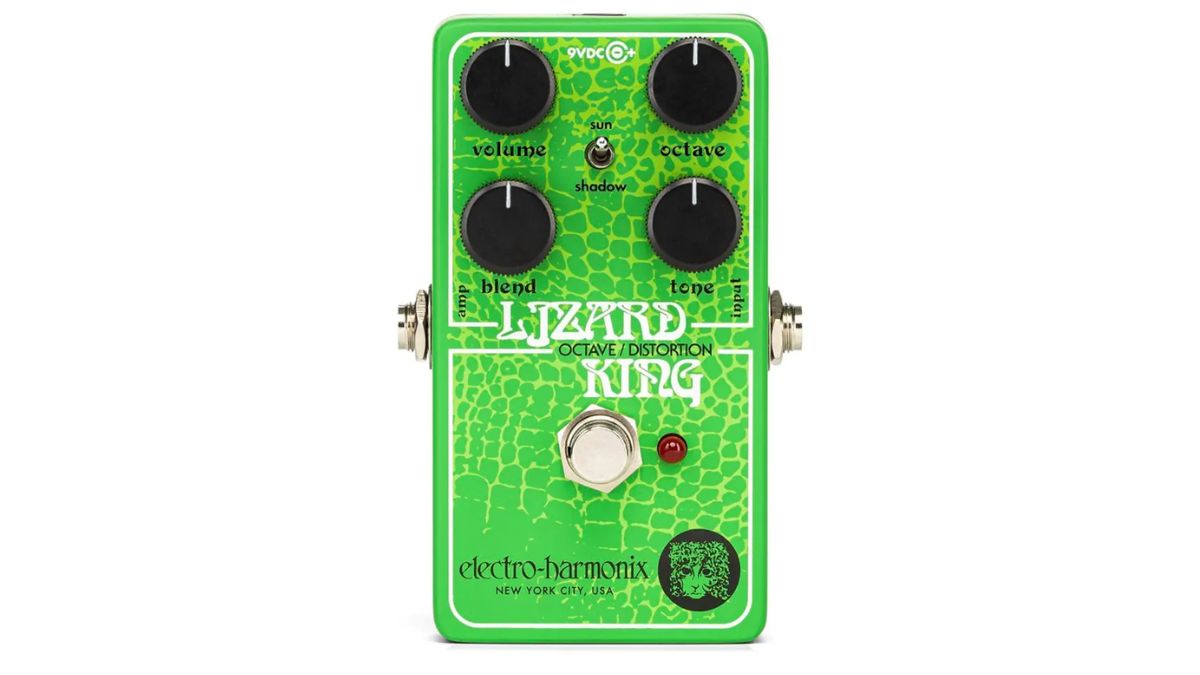“A gnarly octave fuzz tone that interacts with your dynamics, optimized for bass”: Is octave fuzz the pedal your bass ’board is missing? Electro-Harmonix sure thinks so
The Lizard Queen has become the Lizard King, offering a dynamic, blendable octave fuzz pedal designed specifically for bass players

When Electro-Harmonix and JHS joined forces for the Lizard Queen fuzz pedal last year – the pedal that Electro-Harmonix could have made in the 1970s, but didn't. And now its hair-raising fuzzy goodness has been remodeled especially for bass guitars.
The new Lizard King marks a rare offering of a bass player-specific octave fuzz pedal, expanding and optimizing the Lizard Queen’s circuit for ground-shaking low-end.
The pedal was inspired by YouTube bass titan Nate Navarro, whose demo of the original Lizard Queen demonstrated the potential of the circuit for low-end fans – although all parties involved maintain this new version works great on guitar, too.
Like the original, the Lizard King is a responsive fixed-gain fuzz pedal, with adjustments made to the bass’ volume affecting the level of fuzz it produces – or as EHX puts it, “A gnarly octave fuzz tone that musically interacts with your dynamics”.
Lower volume naturally equates to a clear-but-fuzzy overdrive, and cranking the volume pushes the gain “over the top”.
The pedal’s Volume and Octave controls do exactly what you'd expect, with the Blend knob dialing the balance between clean and fuzz tones while striving to retain the bass’ innate attack.
The final dial is for Tone, essentially a low-pass filter that rolls off the high-end as per a player’s preference. An additional Sun/Shadow switch is also in place: Sun mode boosts the octave fuzz “with a driving midrange,” with Shadow mode tightening the fuzz tone but leaving the clean untouched.
Get The Pick Newsletter
All the latest guitar news, interviews, lessons, reviews, deals and more, direct to your inbox!
When in Sun mode, the clean tone, accessed by the Blend knob, has more bass and treble frequencies.
The pedal has true bypass switching and is powered by a standard, pedalboard-friendly 9V supply.
The EHX Lizard Queen was born from a love for the firm’s ‘70s design shared by JHS Pedals’ Josh Scott and graphic artist Daniel Danger.
It offered a musically interactive pedal, responding to player dynamics with a blendable octave sound, with the joys it brought now expanded to keepers of the low-end.

The Lizard King becomes available for public fuzz-sumption in July, and costs a not-too-outrageous $129.
Head to EHX to learn more about this bass fuzz beast.
A freelance writer with a penchant for music that gets weird, Phil is a regular contributor to Prog, Guitar World, and Total Guitar magazines and is especially keen on shining a light on unknown artists. Outside of the journalism realm, you can find him writing angular riffs in progressive metal band, Prognosis, in which he slings an 8-string Strandberg Boden Original, churning that low string through a variety of tunings. He's also a published author and is currently penning his debut novel which chucks fantasy, mythology and humanity into a great big melting pot.











